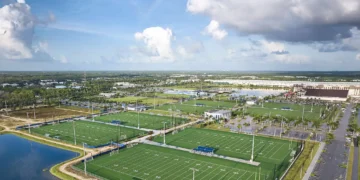On a clear and sunny Tuesday morning in March, Adam Catasus stands on the deck of the Weatherbird II, the 120-foot research vessel that will take him and his crew out to the Gulf of Mexico for the week. He’s wearing black nylon pants, a pair of rubber XTRATUF boots, a faded Dive Rite hat and a pale blue sun shirt from the Master Bait & Tackle Shop in Bonita. Sunglasses hang around his neck, and his hair whips around his tanned face. He looks like a man who spends a lot of time on—and in—the water. Catasus is a research scientist at Florida Gulf Coast University and the chief scientist on this trip. He’s dedicated his life to studying the Gulf, and he’ll be leading a crew of 12 on a seven-day voyage with a single goal in mind: to figure out just how much damage Hurricane Ian did to the offshore ecosystem.
“When the hurricane hit, it stirred everything up on the bottom, a lot of stuff that usually doesn’t get moved,” Catasus says. “I say ‘stuff’ because there’s no other good word for it—nutrients, contaminants, everything in the sediment since the last big storm. That was Irma, five years ago. Ian came in with its 50-foot waves and ripped the bottom up, stirring five years’ worth of stuff in 24 hours. Now we want to see how the benthic environment”—that is, whatever is at the bottom of a body of water—“has changed.”
This expedition is his third week-long trip in the wake of the storm. The first took place in October, just three weeks after Ian devastated Southwest Florida. The second occurred in January. This will be the final leg of the three-part fact-finding mission. The funding for these voyages came from a disaster grant from the National Science Foundation. When it comes to science research, “a lot of times natural disasters grease the wheels,” Catasus says.
The Weatherbird II will start its voyage in St. Petersburg, where it’s moored at the docks of the Florida Institute of Oceanography, and follow the coastline south to Marco Island, pausing to take water and sediment samples at 20 passes along the way. The team will pull samples from the water column and send a team of divers to the bottom to obtain sediment. The research vessel will also travel 90 miles offshore to investigate the state of the west Florida shelf, a flat carbonate shelf that extends nearly 100 miles into the Gulf. The research team will collect material to use in their analyses back at the lab, where they’ll measure for nitrogen, phosphorous and microplastics. They’ll also look for organic contaminants that don’t belong in the ocean: oil, gasoline and the chemicals used in building materials. “There was a 10- to 20-foot storm surge,” Catasus says. “A lot of stuff got pulled into the Gulf. We don’t have a way of knowing how many cars ended up in the water or how many boats ended up sinking, but we can collect water to measure for contaminants that are associated with vehicles and vessels.”
It’s a slow process, one that will take months, but at the end of it Catasus and the other researchers involved with the expedition intend to publish research papers that detail the damage done to the Gulf. It’s too early to say what the findings will reveal about Ian’s impact on the ecosystem, though Catasus is concerned. Already, a red tide bloom is raging off the coast, and researchers suspect that Ian is to blame.
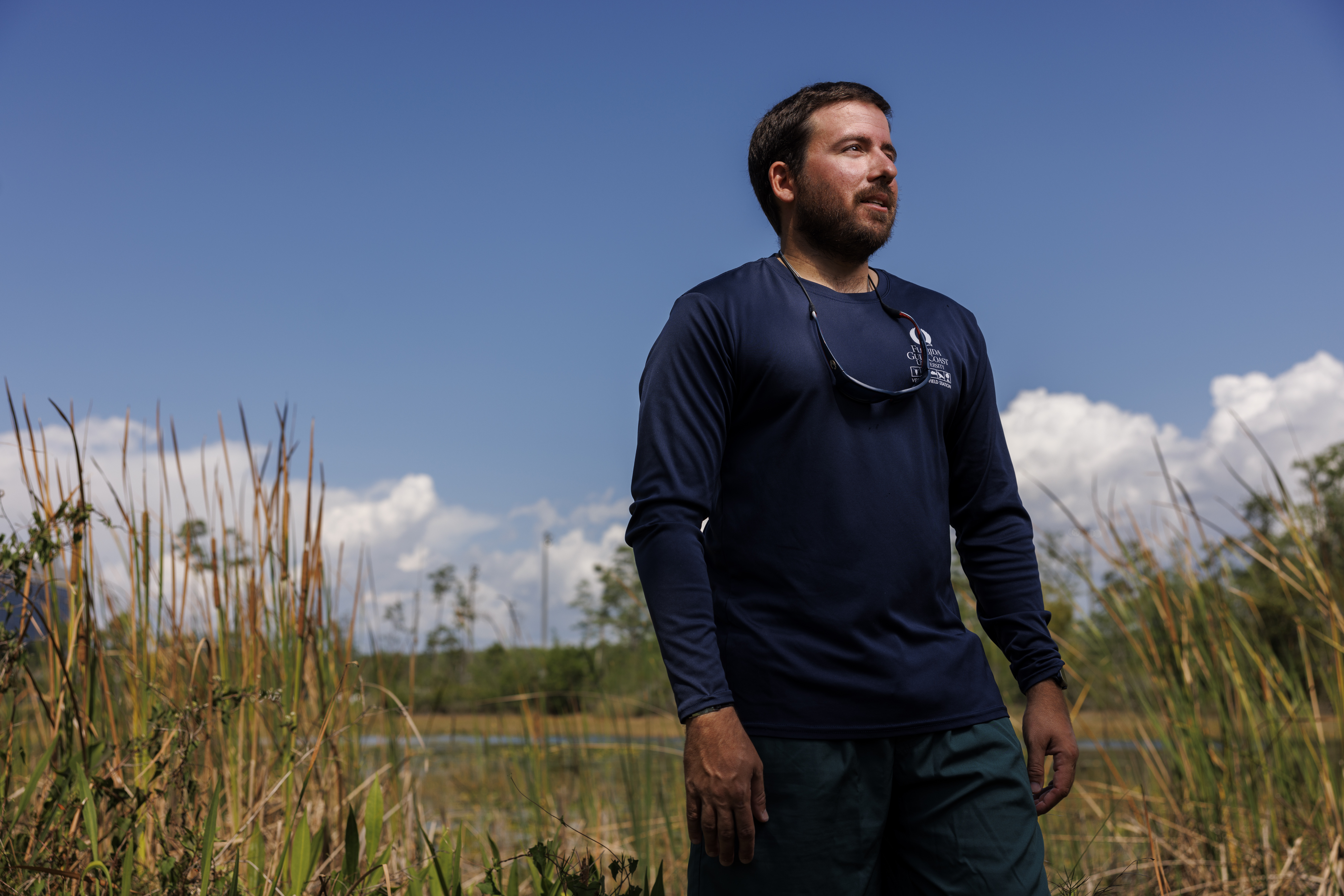 A bruised ecosystem
A bruised ecosystem
In the wake of Hurricane Ian, scientists at the Mote Marine Laboratory in Sarasota turned to satellite images to see what was happening in the Gulf. Like Catasus and his team, the Mote scientists also benefited from a catastrophe grant from the National Science Foundation. What they found was disturbing: Plumes of dark brown water were emptying into the Gulf of Mexico from estuaries along the southwest coast of Florida, turning the coastal waters brown and making the coastline look bruised. The plumes were created by the heavy rainfall that had fallen inland and was now traveling to the Gulf through rivers, creeks and streams. By the time the rainfall reached the coast, it carried a massive load of nutrients, dissolved organic matter, algae, bacteria and sediment.
Cynthia Heil, a senior scientist at Mote Marine, was one of the researchers to see the dark plumes along Florida’s coast. “Hurricane Ian was unprecedented in terms of the path of its rainfall,” Heil says. “The rain that fell on central Florida eventually brought watershed nutrients to the coastal environment. Now we’re measuring the effect to our ecosystems of those legacy nutrients.”
Legacy nutrients are those found at the bottom of Lake Okeechobee, mostly from fertilizer runoff. These nutrients have remained in place for years, locked into the sediment. Though normal amounts of rain wash nutrients into the Gulf on a regular basis—this is a known concern, one scientists have studied for years—the major rain event caused by Hurricane Ian forced those legacy nutrients to be washed into the Gulf, as well. “It was a double hit,” Heil says.
This double dose of excess nutrients and sediment may spell disaster for the fragile Gulf. Nutrients support the growth of harmful algal blooms, which lead to red tide. They also encourage bacteria growth, which causes oxygen depletion. And the increased sediment in the coastal environment chokes off sunlight and kills seagrasses. The biome has been struggling with the day-to-day nutrient problem for decades, but a double hit of nutrients is staggering. The Gulf may never bounce back.
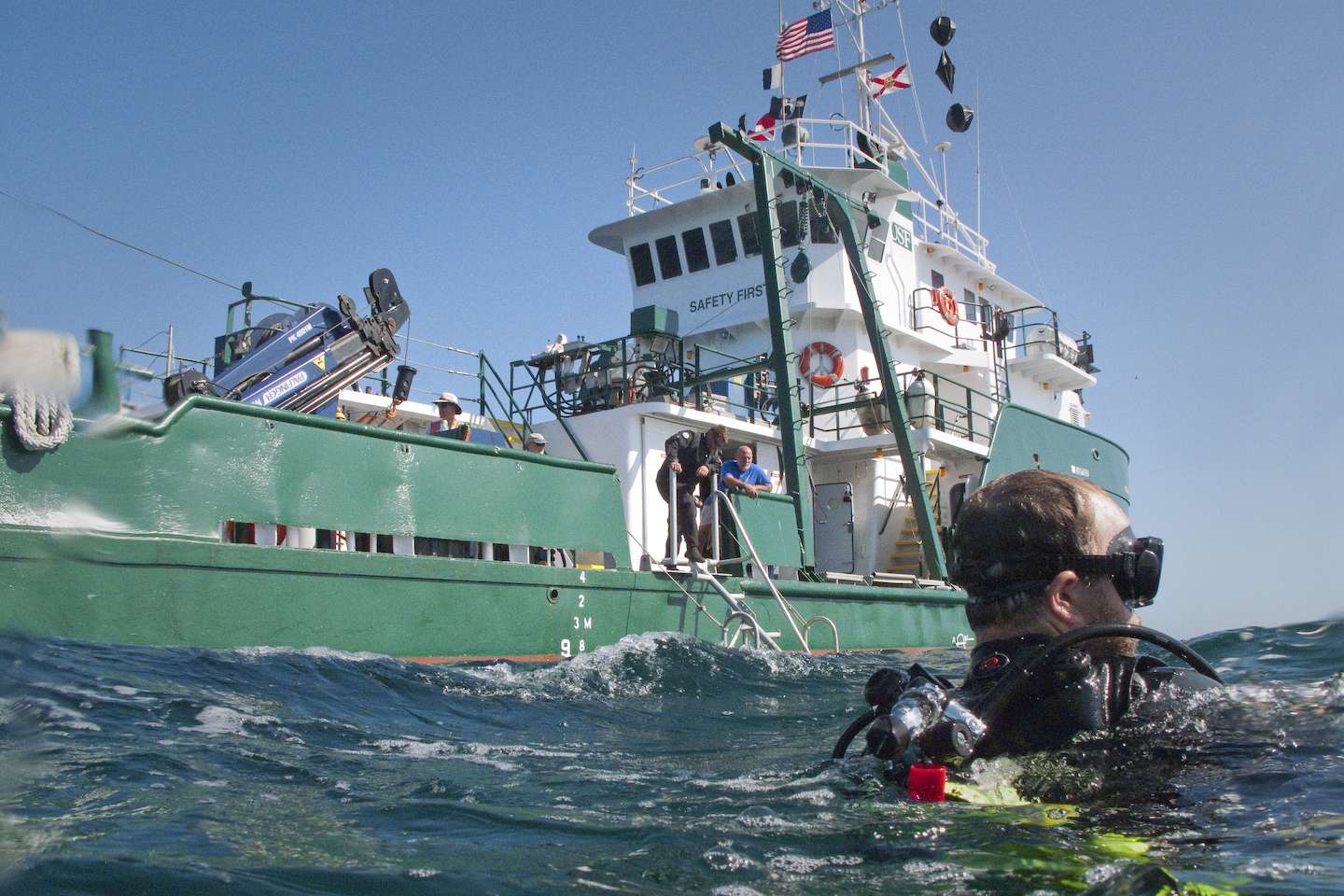 The expedition
The expedition
The fiberglass deck of the Weatherbird II has been hosed clean in anticipation of the vessel’s upcoming voyage. Twenty-one black plastic tubs filled with equipment and supplies are stacked on the deck, plus a dozen Igloo coolers. Three of the ship’s crew unload groceries from a pickup truck.
“I reorganized the bottom snack cabinet,” one woman calls out. “There’s a bunch of cake mix under there.”
“There’s what?” a bearded man says.
“Cake mix.”
“Cake?”
“With sprinkles.”
They bring the groceries through the boat’s metal door, the one that leads to the galley, the berths and the head. This particular expedition has five working crew members employed by the Florida Institute of Oceanography, plus 12 scientists—Catasus, three FGCU graduate students, seven FGCU undergraduate students and Eric Milbrandt, director of the marine laboratory at the Sanibel-Captiva Conservation Foundation. Most of the scientific team are certified divers, and many have their scientific diver certification from the American Academy of Underwater Scientists, a course offered at FGCU. Twenty-two dive tanks are on their way to the boat, plus a variety of other equipment. While Catasus watches, a scientist from USF pushes a metal rolling cart over to the edge of the boat and starts unloading scientific gear—tubing, straps and a machine that measures turbidity.
“I put in 80- to 100-hour work weeks,” Catasus tells me. “People say I’m weird. They tell me I should do less, but I love it. What else am I going to do with my time? I’d just be out diving anyway. If I’m going to go offshore, I might as well be productive.”
Catasus has been exploring these waters most of his life. He’s studied the organisms in them and the ecosystems that contain them. He’s monitored the coastal environment after every hurricane that’s blown through in the last 10 years. But he’s never seen a storm to compare to Ian.
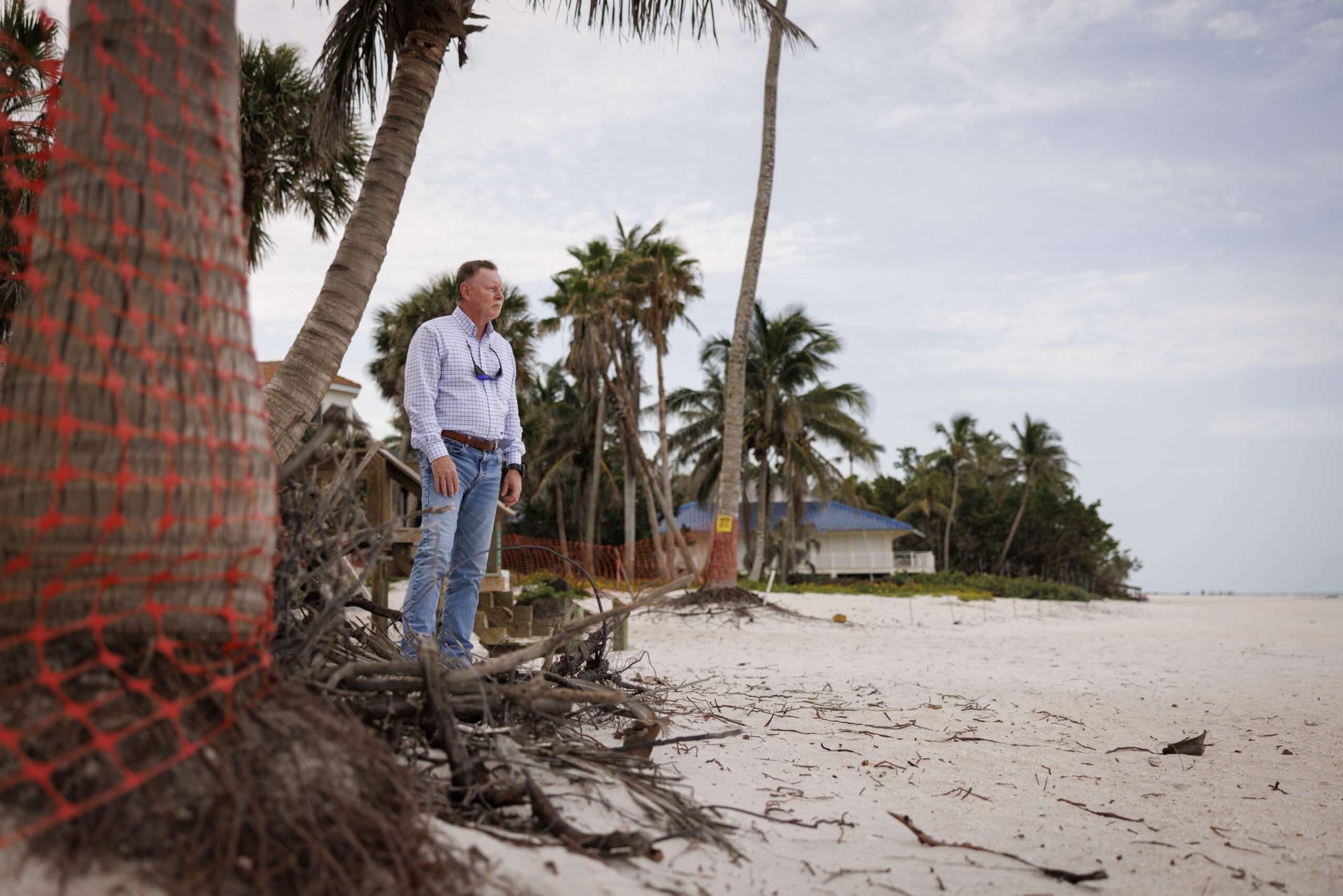 Shifting sands
Shifting sands
Collier County was in the middle of a major beach renourishment project last September when Ian came ashore. That project has been put on hold in the wake of the storm, and the county’s Coastal Zone Management team has redirected its efforts to building an emergency berm to protect the vulnerable structures along the shore that were left exposed when the beaches’ dunes washed away. “Essentially, we’re building a dune along the high side of the beach, then we’ll come back next fall and winter to put additional sand to build the rest of the beach down toward the water,” says Andy Miller, manager of the Coastal Zone Management Section. Construction on the project will last into late May and early June if all goes according to plan, Miller says.
What people call the “beach” in Southwest Florida starts at the dune line at the high part of the beach and extends 1,000 or more feet into the water. The sand is constantly shifting, moving from the dry beach—the land above the high-water line—to the stretch of beach that sits underwater. “Typically in the summer months some of the sand that went offshore will find its way back to the dry beach as the waves help push it back,” says Miller. “Hopefully, that will happen this summer. If not, we’ll come back next year and do a proper renourishment of the hardest hit beaches.”
Miller and his team have more than people in mind when they consider the urgency of their project. They’re also weighing the needs of local wildlife, especially endangered sea turtles. Typically, turtles bury their nests in the high part of the dune. Now that so much sand has shifted to the water, the dunes are lower than they’d normally be. This means sea turtle nests will be at greater risk for flooding this season unless new sand can be trucked in. “Hopefully, we’ll be able to get our dune project built before then and provide them a little additional nesting area,” Miller says. “But we’ve got to work fast.”
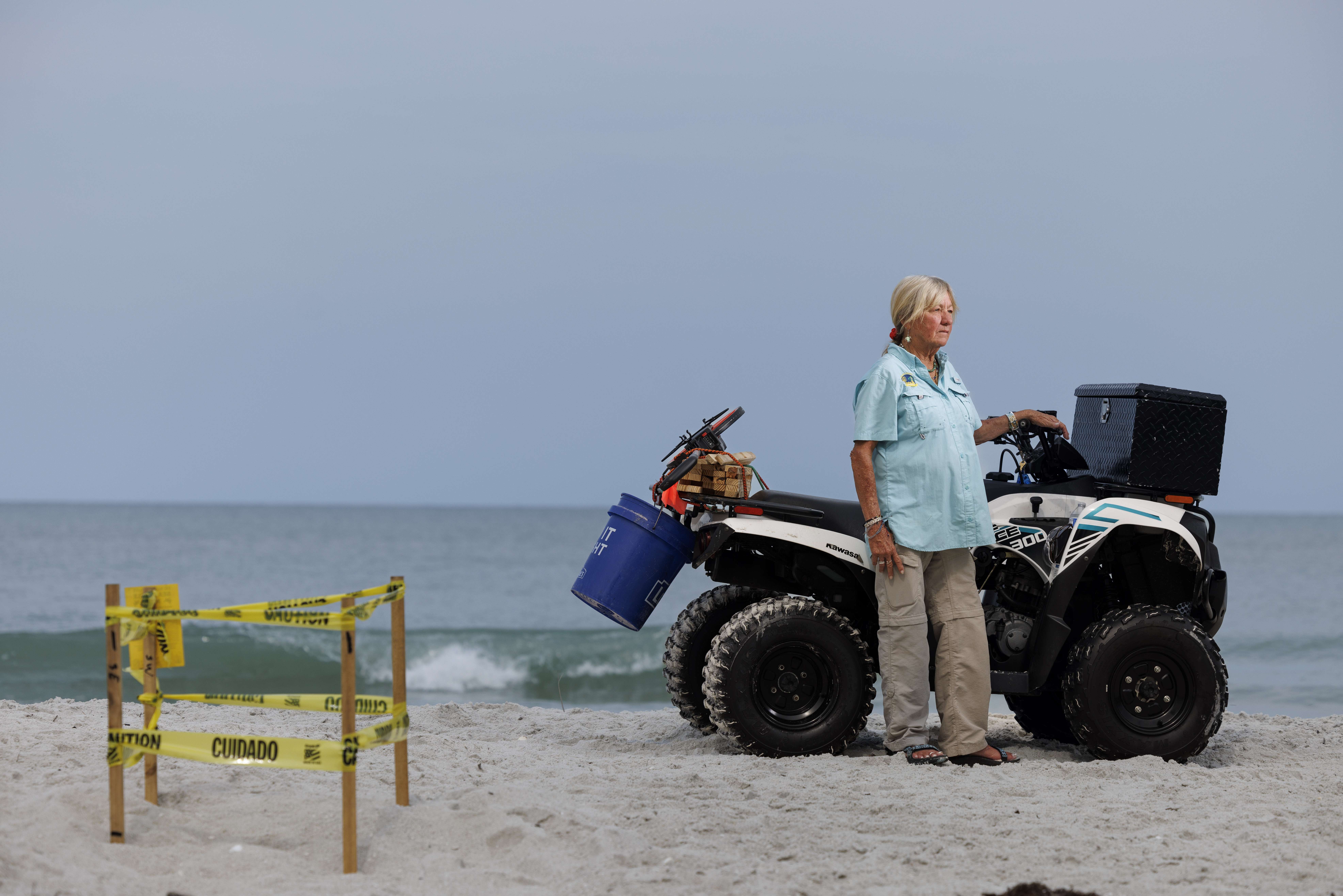
Washed away
Some good news: The local sea turtle population fared better in the storm than expected. Of the 1,045 loggerhead sea turtle nests laid during the 2022 sea turtle nesting season, only 40 were lost to Hurricane Ian. Fourteen of those 40 nests had already hatched; scientists just hadn’t had time to dig them up and excavate them before the storm. Which means 26 nests in total were washed away by the flooding from the hurricane. A sad number, but not a devastating loss, said Maura Kraus, principal environmental specialist for Collier County. “It could have been much worse.”
On Fort Myers Beach, it was similarly good news. The sea turtle monitoring group Turtle Time documented 109 nests during the 2022 season. Only five nests were affected by the storm, and because Hurricane Ian came late in the turtle nesting season, it’s possible that some of the turtles in those nests had already hatched and were simply washed out to sea—where they were destined to go anyway. “Had the hurricane occurred in July, the loss would have been significant,” says Eve Haverfield, Turtle Time’s founder and director.
Sea turtle nesting season in Southwest Florida runs May to November, neatly overlapping with hurricane season. This might spell calamity for the already endangered species, but sea turtles have developed an evolutionary strategy to mitigate the threat from dangerous storms: females lay multiple nests throughout the season. A storm may occur earlier in the summer and wash away a clutch of eggs, but eggs laid later in the summer still have a shot at survival.
“You have to step back and think that sea turtles have been in existence for millions of years,” says Collier County’s Miller. “They’ve been dealing with storms all that time, and they’re pretty resilient. This is Mother Nature at work. Unfortunately, it’s not her best work—but it’s still part of what she does.”
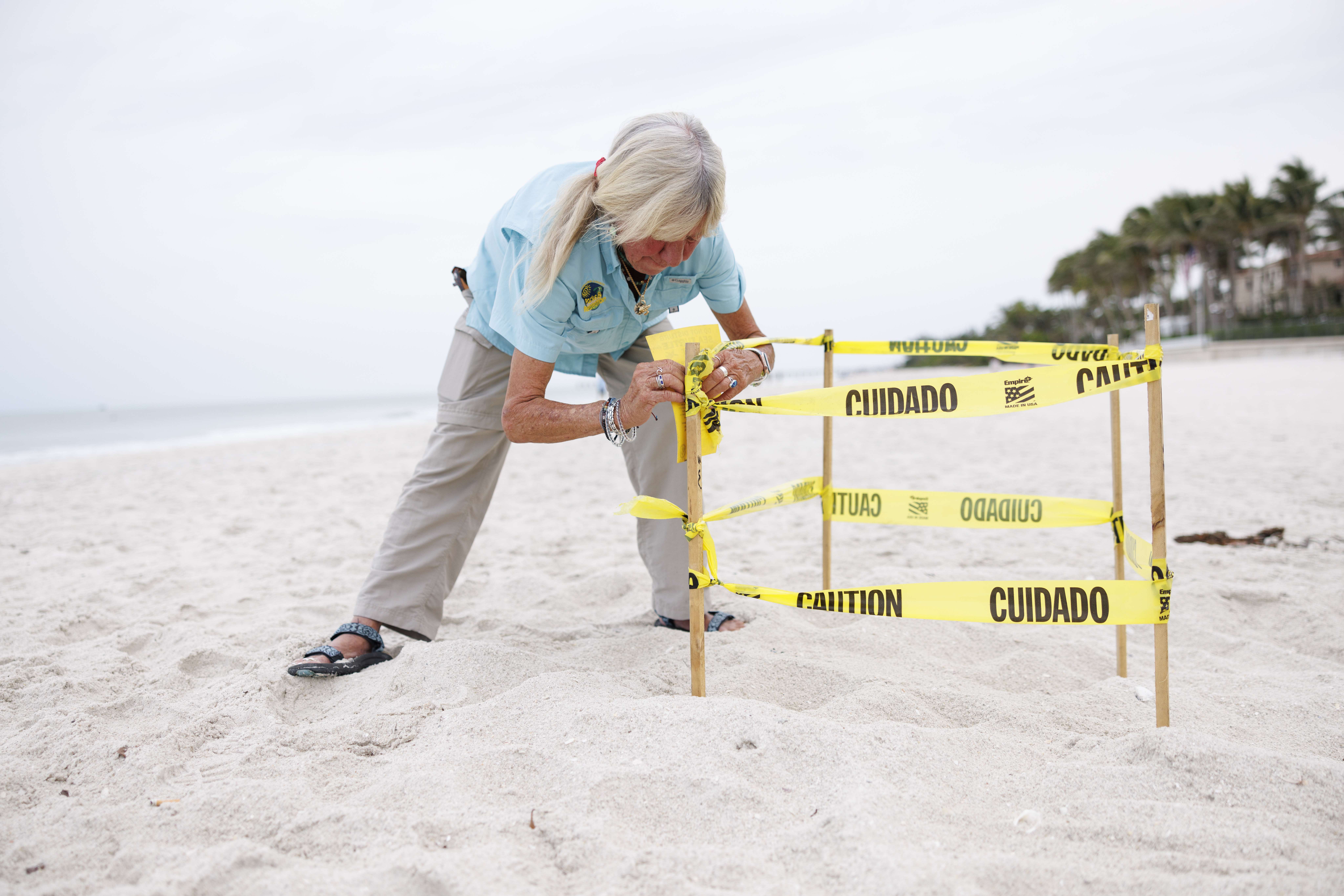 A Keystone species
A Keystone species
For the gopher tortoise, things weren’t so lucky. The federally protected species spends much of its life in burrows under sandy soil. When flood waters swept across Southwest Florida, many of the tortoises drowned. Those that survived emerged to find that the vegetation had been wiped out, and they had no food source. “A lot of them died, and many are very ill,” says Nora Demers, associate professor of biology at FGCU and member of the Gopher Tortoise Council. She points to the fact that gopher tortoises are a keystone species, meaning other species in the ecosystem depend on them. In this case, gopher tortoise burrows provide shelter for a number of other animals, including snakes, frogs and rodents. With many of the tortoises gone, the ecosystem as a whole will suffer. “Long-term, it’s very problematic,” Demers says.
The future of the ecosystem
On the deck of the Weatherbird II, I asked Catasus about the red tide bloom that’s affecting the Gulf. My mother lives on Fort Myers Beach in one of the few houses left standing, and every time I call, she has to put down the phone and cough. “This red tide is killing me,” she says.
Catasus told me that studying red tide is difficult. The blooms move, and it’s difficult to pin down the factors that make the naturally occurring algae explode into something that kills sea life and leaves beachgoers gasping. But scientists know that algal blooms respond to excess nutrients in the water, and the upland rainfall from Ian caused a double dose of nutrients to flow into the Gulf. So, it makes sense that the red tide offshore is the likely result of Ian. Similarly, the 2018 red tide bloom was probably exacerbated by hurricanes Irma and Maria, scientists believe.
As for the effects of the chemicals and pollutants from everything that got washed into the Gulf, Catasus doesn’t have an answer yet. But he’s hopeful about the long-term outcomes. “The Gulf is insanely resilient,” he says.
It’s also insanely fragile. That’s why he and his team are setting off on their expedition; not just to study the effects of Hurricane Ian. “But so we can come up with a plan to fix it.”
